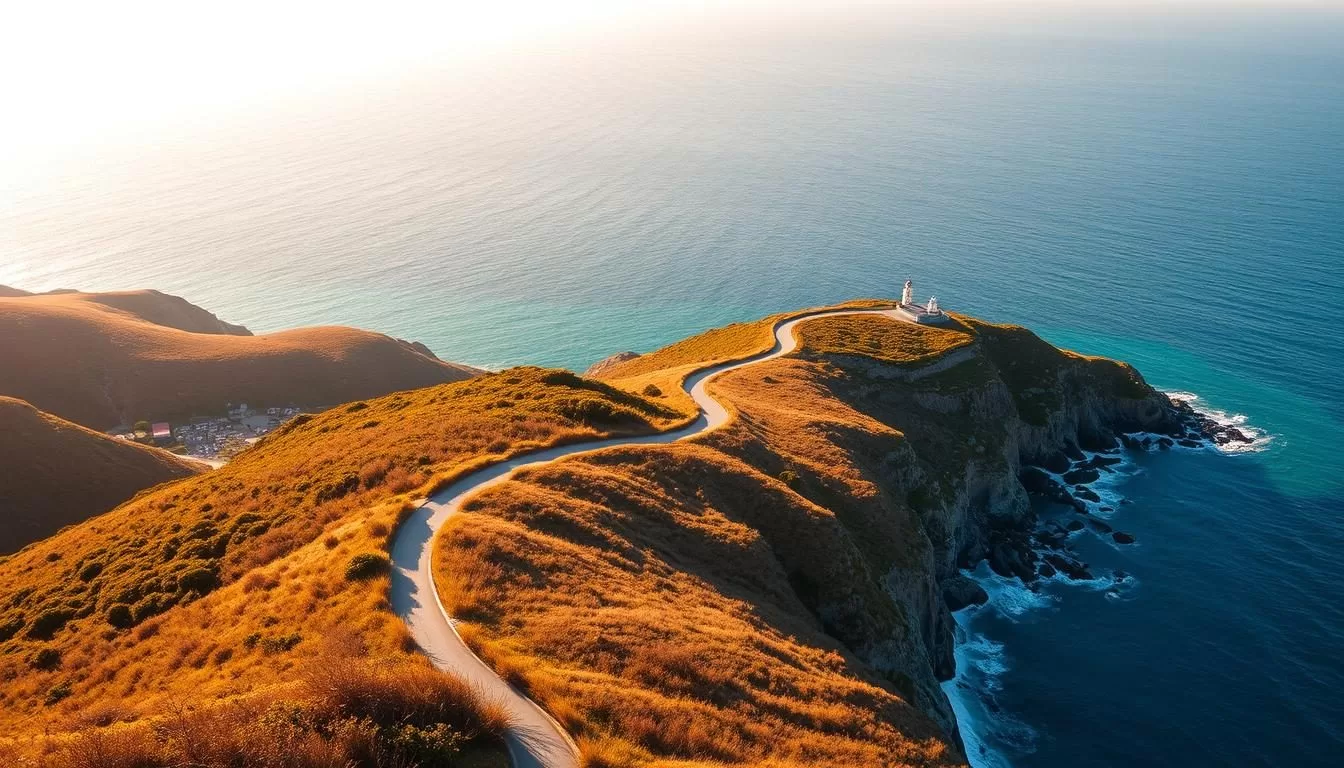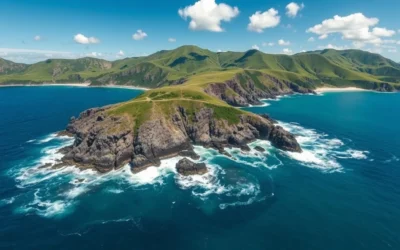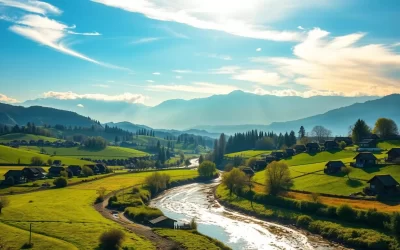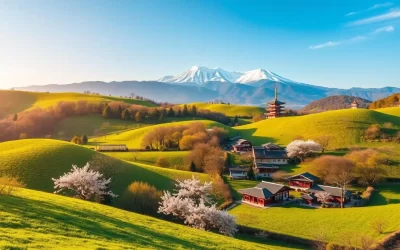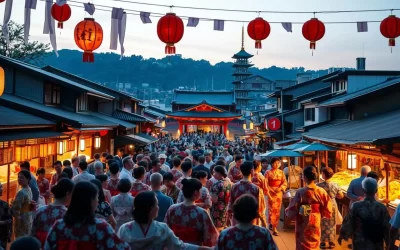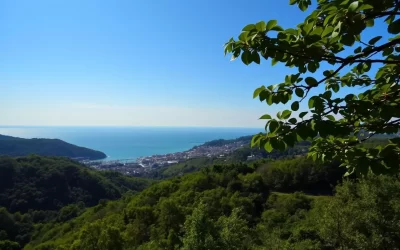Nestled along Japan’s northeastern coastline, a region of breathtaking natural beauty has emerged from the challenges of the past. The Michinoku Coastal Trail, a 1,000-kilometer hiking trail, weaves through this stunning landscape, offering a journey of discovery and renewal.
This national park, established after the 2011 Great East Japan Earthquake, spans across three prefectures: Aomori, Iwate, and Miyagi. As you explore the dramatic coastlines, pristine beaches, and rugged mountain trails, you’ll uncover a region that has transformed tragedy into renewal.
Whether you’re an avid hiker or nature enthusiast, this park offers a unique blend of natural beauty and cultural resilience. You’ll discover breathtaking ocean views, cultural encounters with local communities, and learn about the park’s recovery story and natural wonders.
The Story Behind Sanriku Recovery National Park
As you explore the Sanriku Recovery National Park, you uncover the powerful story of a region’s struggle and rebirth. The park’s history is intricately linked to the devastating Great East Japan Earthquake and tsunami that occurred on March 11, 2011.
Birth from Tragedy: The 2011 Earthquake and Tsunami
The 2011 earthquake and tsunami had a profound impact on the region, leading to the establishment of the Sanriku Recovery National Park. The disaster prompted a shift in Tohoku’s travel focus towards eco- and community-based tourism. Key facts about this period include:
- The Sanriku Recovery National Park was born from one of Japan’s most devastating natural disasters.
- The original 10-meter-high seawall in Taro was breached by 15-meter waves, resulting in significant loss of life and property.
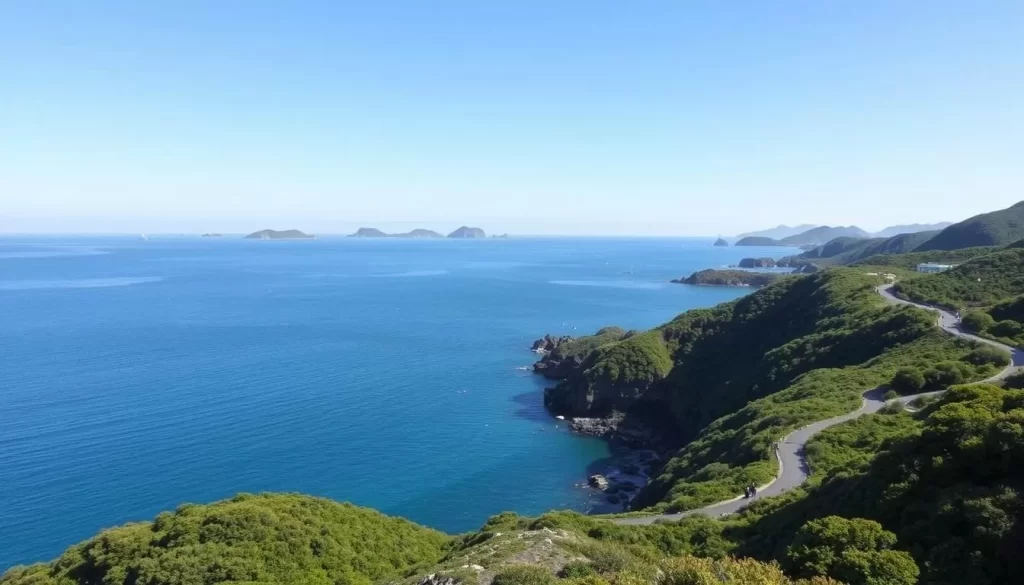
A Symbol of Resilience and Renewal
The creation of the national park represents Japan’s commitment to rebuilding while honoring the past and protecting for the future. It serves as both a memorial to those lost and a celebration of the region’s recovery and resilience. Today, the park invites visitors to witness this rebirth firsthand, with each day bringing new growth and healing to the area.
The park’s unique approach to transforming tragedy into an opportunity for ecological conservation and community revitalization makes it a significant national park. Visitors can explore the Michinoku Coastal Trail and experience the park’s natural beauty while supporting recovering communities.
The Magnificent Michinoku Coastal Trail
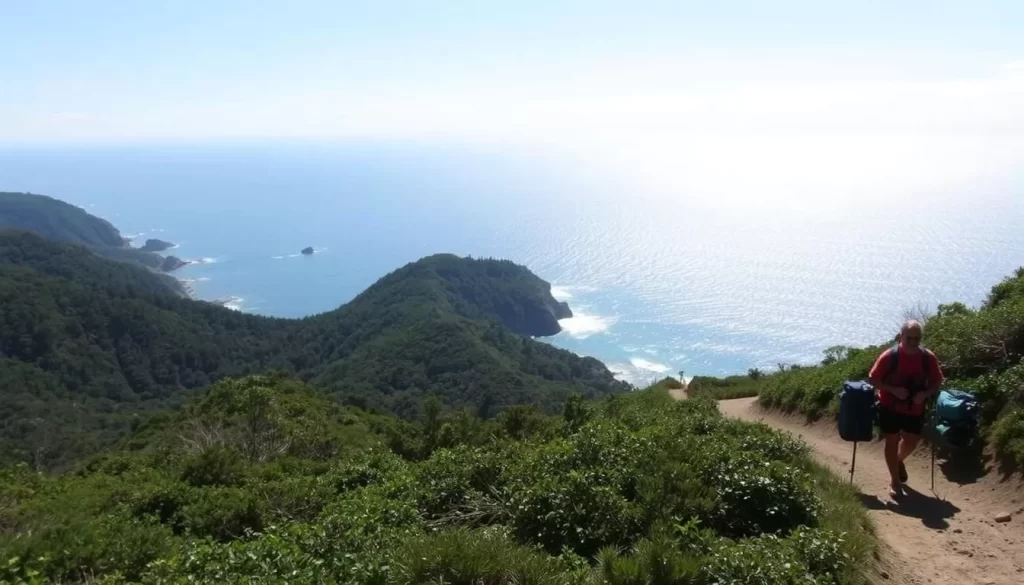
As the backbone of Sanriku Recovery National Park, the Michinoku Coastal Trail is a must-visit destination for outdoor enthusiasts and those seeking to experience the region’s recovery and natural beauty firsthand.
Overview of the 1,000-Kilometer Journey
The Michinoku Coastal Trail is a “trail to take by foot,” stretching over 1,000 km from Kabushima in Hachinohe City, Aomori Prefecture, to Matsukawa-ura Environmental Park in Soma City, Fukushima Prefecture. This ambitious trail was completed in 2019 as part of the recovery efforts following the Great East Japan Earthquake, thanks to the collaborative efforts of the Ministry of the Environment, 29 municipalities across 4 prefectures, and local communities.
The trail can be completed in about 50 days by walking 20 km per day, but it’s designed to be modular, allowing you to choose sections based on your endurance and experience.
Best Sections for Day Hikers and Casual Visitors
For day hikers, the 9km route from Kabushima to Tanesashi Coast is recommended, offering gentle terrain with diverse landscapes, including rocky areas, meadows, sandy beaches, and pine forests. Another highlight is the stretch between Fudai and Tanohata villages, featuring dramatic scenery with 200-meter-high cliffs, though it’s more challenging due to steep ascents and descents.
Each section of the coastal trail changes character every 30 minutes or so, providing constantly refreshing views and experiences as you walk along the coastline.
Aomori Area Highlights
Your journey through Sanriku Recovery National Park is not complete without experiencing the highlights of Aomori. The Aomori area forms the northern gateway to the park, with Hachinohe City serving as your ideal starting point for exploration.
Kabushima Shrine and the Black-Tailed Gulls
At Kabushima Shrine, you’ll witness an extraordinary natural spectacle as 30,000-40,000 black-tailed gulls nest and raise their young from March to August. These gulls are considered sacred messengers of Benzaiten, the shrine’s deity who protects business prosperity and fishing safety.

Tanesashi Natural Lawn and Coastline
The Tanesashi Natural Lawn presents a unique coastal meadow with over 650 plant species, creating a carpet-like grassland that meets the ocean. This distinctive landscape was historically used as a pasture for horses, with the animals’ grazing helping to maintain the lawn’s pristine condition.
Mount Hashikamidake Panoramic Views
From Mount Hashikamidake (740m), you’ll enjoy breathtaking panoramic views of the Hakkoda and Kitakami mountain ranges alongside the vast Pacific Ocean. The mountain offers seasonal highlights with rhododendron flowers lining the trails in early summer and a serene snowy landscape for winter hikers.
| Attraction | Description |
|---|---|
| Kabushima Shrine | Famous for black-tailed gulls nesting from March to August |
| Tanesashi Natural Lawn | Unique coastal meadow with over 650 plant species |
| Mount Hashikamidake | Panoramic views of mountain ranges and the Pacific Ocean |
Iwate Area Must-See Attractions
As you explore the Iwate area of Sanriku Recovery National Park, you’ll discover a wealth of natural beauty and resilience.
The “Alps of the Sea” at Kitayamazaki Coast
The Kitayamazaki Coast is a breathtaking example of nature’s power, with towering 200-meter-high cliffs and jagged rock formations that have earned it the nickname “The Alps of the Sea.” You can walk along the coast on a footpath, taking in the stunning views at Kitayamazaki Observatory, or experience the rugged beauty up close with a sightseeing cruise on a small fishing boat, known as sappa boats.
Paradise Beach: Jodogahama’s Crystal Waters
Jodogahama Beach, aptly named “Paradise Beach,” is a serene destination with crystal-clear waters, white rhyolite rocks, and a peaceful atmosphere. The calm waters make it an ideal spot for swimming during the summer, while the tidepools are teeming with marine life. You can explore the unique rock formations and caves on sappa boats or larger sightseeing vessels.
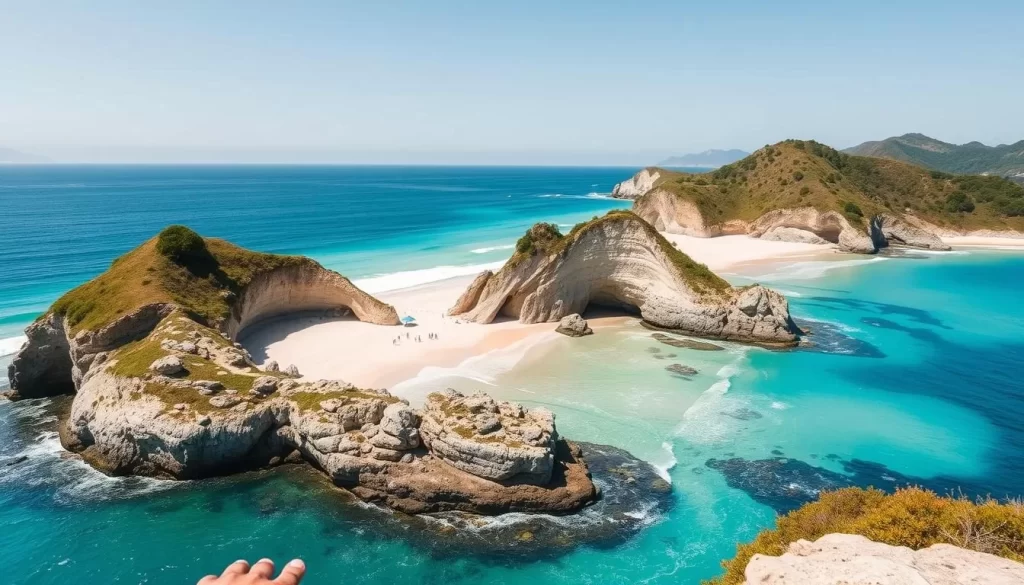
Tsunami Memorial Sites and Recovery Stories
Throughout the Iwate area of the national park, you’ll encounter poignant tsunami memorial sites that honor the 2011 disaster and celebrate the region’s recovery. Tsunami Memorial Park Nakanohama, built on the site of a destroyed campground, serves as a place for reflection and remembrance. The “Miracle Pine Tree” in Rikuzentakata stands as a powerful symbol of resilience.
Miyagi Area Treasures
As you explore the southern part of Sanriku Recovery National Park, you’ll discover the Miyagi area‘s unique treasures. The region is home to a mix of natural beauty and cultural significance, making it a must-visit destination.
Kesennuma Bay and Oyster Farms
Kesennuma Bay, centered around a major fishing port, is dotted with oyster farms that you can tour to learn about sustainable aquaculture practices. The bay is also home to two museums that document the 2011 disaster.
Shizugawa Bay Conservation Area
Shizugawa Bay in Minamisanriku Town represents an inspiring conservation success story within the national park. Once devastated by the tsunami, the bay has been revitalized and recognized as a Ramsar wetland site of international importance for waterfowl habitat.
Sacred Kinkasan Island and Its Deer
Sacred Kinkasan Island offers a spiritual dimension to your national park experience. The island is home to free-roaming deer considered to be divine messengers, creating a peaceful coexistence between nature and spirituality, near the sea.
Sanriku Recovery National Park: Best Things to Do – Top Picks
Explore the best things to do in Sanriku Recovery National Park, from thrilling adventures to serene natural encounters. The park offers a variety of experiences that allow you to connect with its stunning natural beauty.
Sappa Boat Adventures Along the Rugged Coastline
Experience the rugged coastline of Sanriku Recovery national park from a new perspective with Sappa Boat Adventures. These guided tours on small fishing boats take you through the unique landscapes of cliffs and strange rock formations, offering a fresh angle on the coastal trail. You’ll navigate through narrow rock formations and enjoy the dramatic cliffs from the sea.
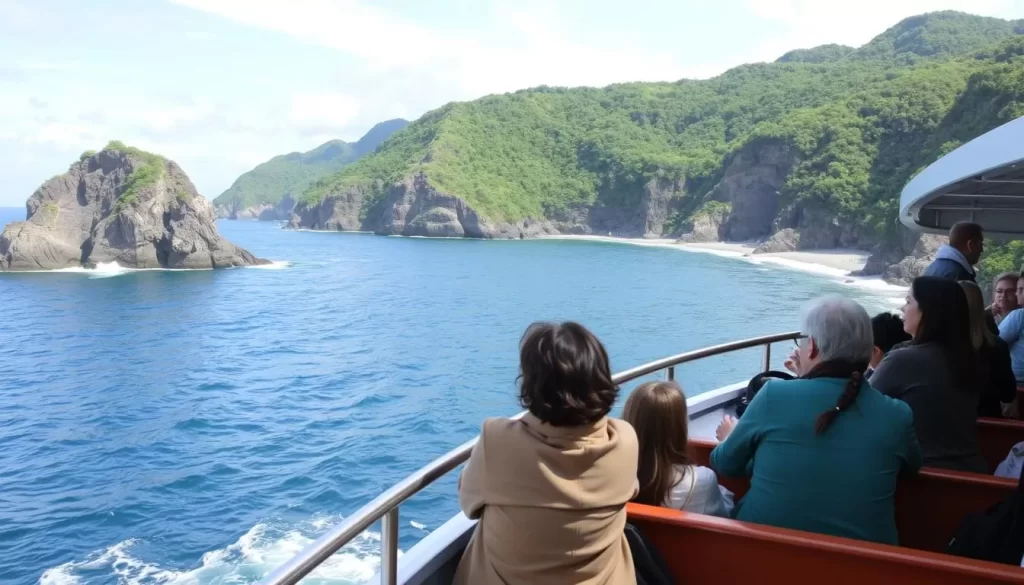
Hiking the Dramatic Cliff Trails
The Michinoku Coastal Trail offers some of Japan’s most rewarding hiking experiences. The section between Fudai and Tanohata villages is particularly spectacular, with 200-meter-high clifftop views, hand-dug tunnels, and challenging terrain that requires ladders and ropes in some spots.
Wildlife Watching Opportunities
Sanriku Recovery national park is a haven for wildlife enthusiasts. From the famous black-tailed gulls at Kabushima to the sacred deer of Kinkasan Island, the diverse ecosystems along the coastal trail support a variety of marine life, birds, and land animals that change with the seasons. Enjoy activities like wildlife watching and connect with nature.
These experiences not only showcase the natural beauty of the national park but also contribute to the recovery of local communities through sustainable tourism.
Cultural Experiences Not to Miss
Sanriku Recovery National Park offers more than just breathtaking natural beauty; it’s a gateway to understanding the deep cultural heritage of the Tohoku region. The park is home to numerous cultural experiences that provide insights into the rich traditions of the area.
Traditional Kagura Performances and Tiger Dances
Traditional Kagura performances represent one of the most distinctive elements of Sanriku culture. Unotori Kagura has been designated as a Nationally Important Intangible Folk Cultural Property. The tiger dance (tora-mai) of Otsuchi town, with its 350-year history, vividly depicts a tiger playing and sharpening its claws, accompanied by traditional flute and drum music. According to local legend, stroking the tiger’s head during performances brings happiness.
Local Crafts: Kokeshi Dolls and Wooden Horses
The region is famous for its local crafts, including simple wooden kokeshi dolls and brightly decorated wooden horse figurines. You can find numerous workshops throughout the prefectures where you can paint your own kokeshi doll or create other traditional crafts. These crafts not only reflect the historical importance of horses in this part of Japan but also offer a unique, hands-on cultural experience.
Culinary Delights of the Sanriku Coast
The Sanriku Coast is a culinary haven, offering an array of fresh seafood that reflects the region’s rich marine biodiversity. As you explore the Sanriku Recovery National Park, you’ll have the opportunity to indulge in local specialties that showcase the freshest catches from the ocean.
Fresh Seafood and Fish Markets
Kesennuma is a great place to experience the local seafood culture, with its bustling fish market offering a glimpse into the day’s catch being auctioned and processed. You can even take a tour of the market and head out on a fishing boat or to an oyster farm to learn about sustainable fishing practices.
Regional Specialties to Try
One of the must-try dishes is “bindon,” a unique specialty served at Jodogahama Beach’s rest house restaurant. This creative meal comes in a milk bottle filled with fresh fish and seafood that you pour over steaming hot rice. The Sanriku Coast is also known for its diverse seafood, including raw squid, scallops, and fish roe caught off the Iwate coast.
The Sanriku Coast is renowned for its exceptional fish and seafood, making it a paradise for food lovers. Visiting the local port towns and trying the regional specialties is an essential part of your national park experience.
Best Times to Visit the Park
The Sanriku Recovery National Park is a year-round destination, with each season offering a distinct and captivating experience. Whether you’re interested in hiking, wildlife watching, or simply taking in the breathtaking views, the park has something to offer at any time of the year.
Seasonal Highlights and Weather Considerations
Each season brings its unique charm to the park. Summer (June-August) is ideal for swimming, exploring tidepools, and enjoying boat tours along the coast. The early summer months showcase rhododendron flowers lining many hiking routes, adding vibrant colors to the landscapes. In contrast, winter (December-February) transforms the park into a serene snowscape, particularly beautiful on Mount Hashikamidake and other elevated areas.
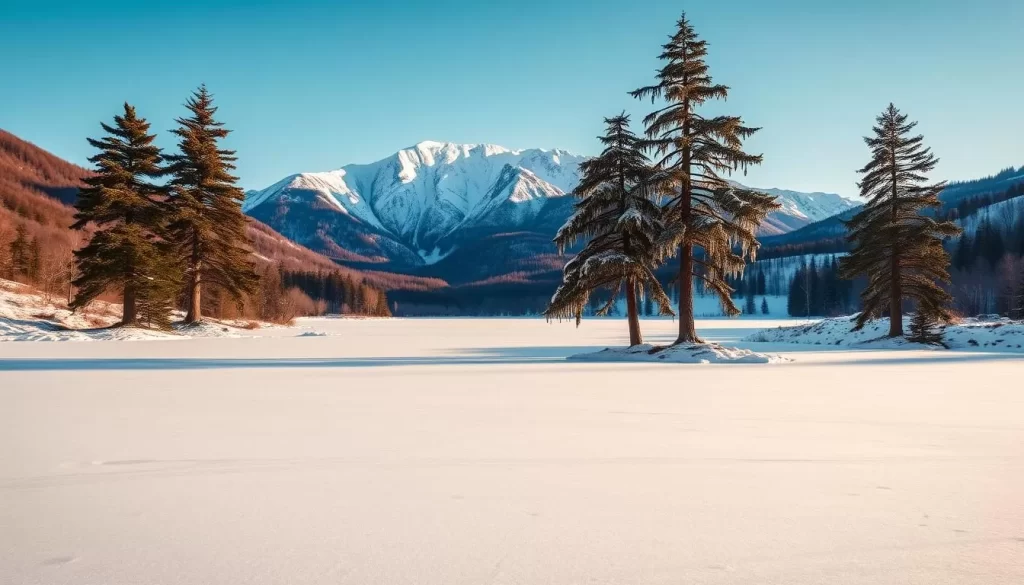
Festival Calendar Throughout the Year
The park’s communities host various festivals throughout the year. Spring (March-May) marks the return of the black-tailed gulls to Kabushima, with approximately 30,000-40,000 birds nesting there through August. Fall (September-November) brings comfortable hiking temperatures and the Kamaishi Festival in October, featuring traditional tiger dances and boat processions. When planning your visit to the national park, consider timing it around these local festivals to experience the rich cultural heritage of the area.
Practical Travel Tips
As you plan your visit to Sanriku Recovery National Park, it’s essential to understand the practical aspects of traveling within this vast and scenic area. The park’s diverse landscapes and attractions make it a unique destination, and being prepared will enhance your experience.
Getting Around the Park
The Sanriku Railway is a scenic way to access different sections of the park, connecting Kuji Station and Mori Station with stunning coastal views. Special themed trains, such as lunch and wine trains, offer unique experiences. For more flexibility, rental cars are available in larger cities like Hachinohe.
| Transportation | Description |
|---|---|
| Sanriku Railway | Scenic train connecting Kuji and Mori Stations |
| Rental Cars | Available in cities like Hachinohe for flexibility |
Accommodation Options Along the Trail
You can choose from a variety of accommodations along the Michinoku Coastal Trail, ranging from basic campsites to comfortable minshuku (bed and breakfasts) and luxurious ryokan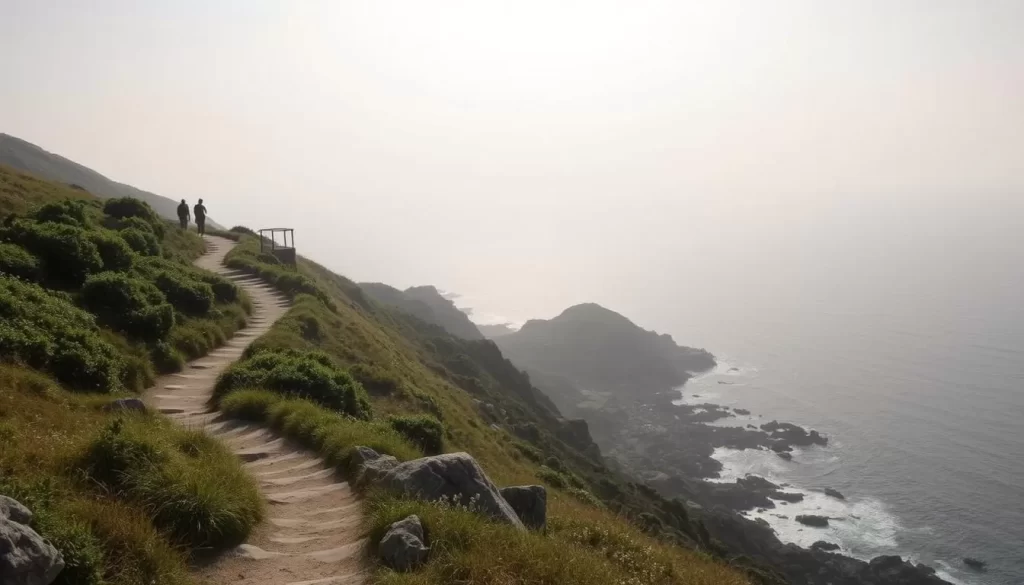 The Tanesashi Coast Information Centre can help arrange guided treks and other experiences.
The Tanesashi Coast Information Centre can help arrange guided treks and other experiences.
Conclusion
Your visit to Sanriku Recovery National Park is more than a trip; it’s an immersion into a story of recovery, resilience, and the unspoiled beauty of the Tohoku region‘s coastline.
As visitors, you contribute directly to the revitalization efforts of the recovering prefectures, experiencing authentic cultural traditions and the natural splendor that this park has to offer.
The park continues to evolve, serving as a model for sustainable tourism and disaster recovery, making it a living symbol of hope and renewal in the region.
The above is subject to change.
Check back often to TRAVEL.COM for the latest travel tips and deals.
